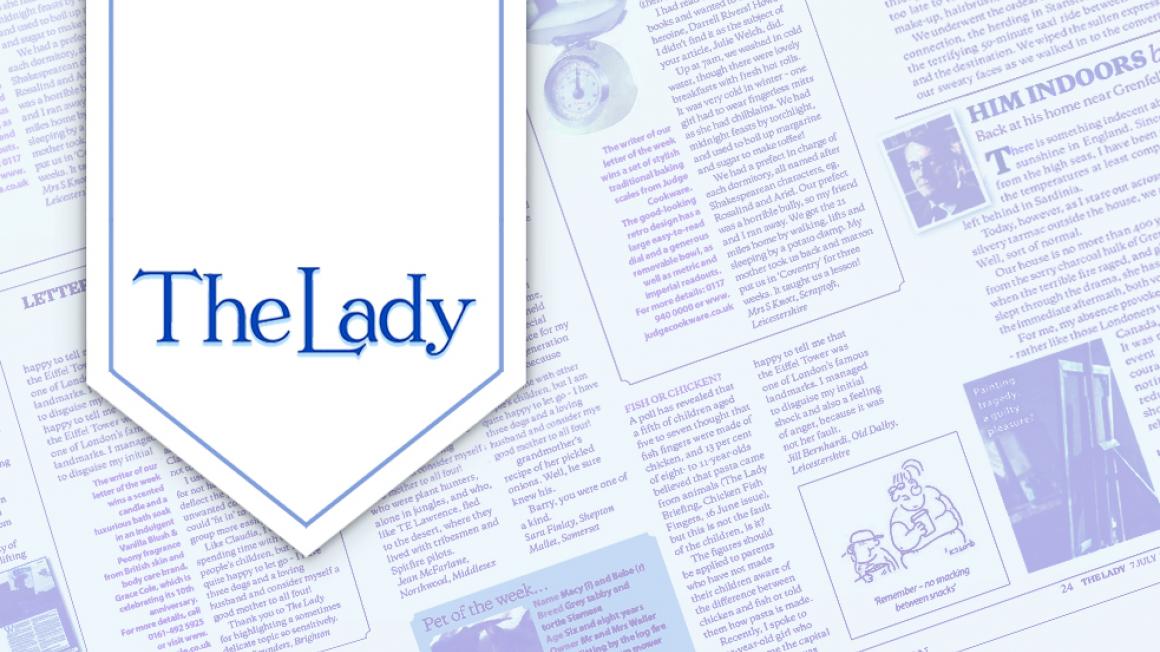The Lady Guide to Modern Manners: 27 September
What do you think about Lady Carnarvon criticising the makers of Downton Abbey for laying the table incorrectly? She says that since her own home, Highclere, stands in for Downton, she feels responsible. Should I worry also about place settings and which knife and fork to use?
Holly Whittle, Paignton
Dear Holly,
After getting your letter, I have found myself studying photographs of the Downton dinner table with a magnifying glass as if possessed. I don’t really see what Lady C is on about. In one shot, Mrs Crawley’s liqueur glass is before, instead of behind, her red and white wine glasses. But who knows? Maybe she moved it herself, mistaking it for a sherry glass because she’s so middle class. Otherwise, the only sin is of omission. The table appears to be laid for three courses, whereas in an establishment on the scale of Downton there would always have been at least five. There are no knives for bread and no tumblers for water.
So a true dinner à la mode Downton (try this at home): cutlery for all five courses laid with earliest course on the outside. A separate knife for bread and butter is the first item on the right-hand side. You must include a spoon and fork for pudding and a knife and fork for cheese. Don’t forget also your crab spoons, lobster picks, ice-cream spoons and fish knives and forks. The side plate is on the left, but where to put the finger bowl? I’m not sure. Glasses are clustered at the top right corner of the place setting with a water tumbler (must be a tumbler) nearest the diner. After that they recede in order of use with the liqueur or port glass at the back.
Curiously Lady Troubridge’s Book Of Etiquette (published in 1926), a bible in its day, makes no reference at all to the ordering of table finery. Eliza, the lesser known female equivalent of Mr Pooter, was put squarely in her place by her maid who provided towels and a bar of carbolic soap in the dining room when Eliza thought to progress to the refinement of finger bowls.
Just possibly a preoccupation with napery and cutlery was considered rather common.
On the other hand, even the Queen Mother glanced nervously to see what Cecil Beaton was doing with his implements. Nobody likes to use the wrong one. Balm your worries, though. It’s so simple. Start on the outside and work in. If you err, the test is how graciously the host spares your blushes or doesn’t notice. It won’t kill you to eat your main with a small fork. When a foreign visitor to Buckingham Palace assumed the water in the fi nger bowl was for drinking, King George V drank from his, too.
Please send your questions to Thomas.blaikie@lady.co.uk or write to him at: The Lady, 39-40 Bedford Street, London WC2E 9ER
WHAT TO DO… IF YOU SAVE SOMEONE’S LIFE
My friend David Newell, England’s premier clock restorer, went out to lunch with his partner, Tom Lawson. When they came back, their decorator was choking to death. A piece of his midday pizza had lodged in his windpipe. Tom had never tried it before, but thought he’d have a go at the Heimlich manoeuvre. The pizza segment shot out and messed up their wall. That wasn’t the worst of it. The decorator failed to thank them.I suppose he might have been in shock or overwhelmed or couldn’t bear to think about it. How do you thank for your life, especially someone you don’t know very well (one’s life is usually saved by a stranger, who’s been on a St John Ambulance course)? I think you’ve got to grasp the nettle but I would forgive anyone who couldn’t. Thanks should not be profuse but straightforward: ‘You saved my life. Thank you.’ The saver should make it clear that they have no wish to seize and possess the life saved. ‘I couldn’t have done anything else.’ Then all parties forget about it.



